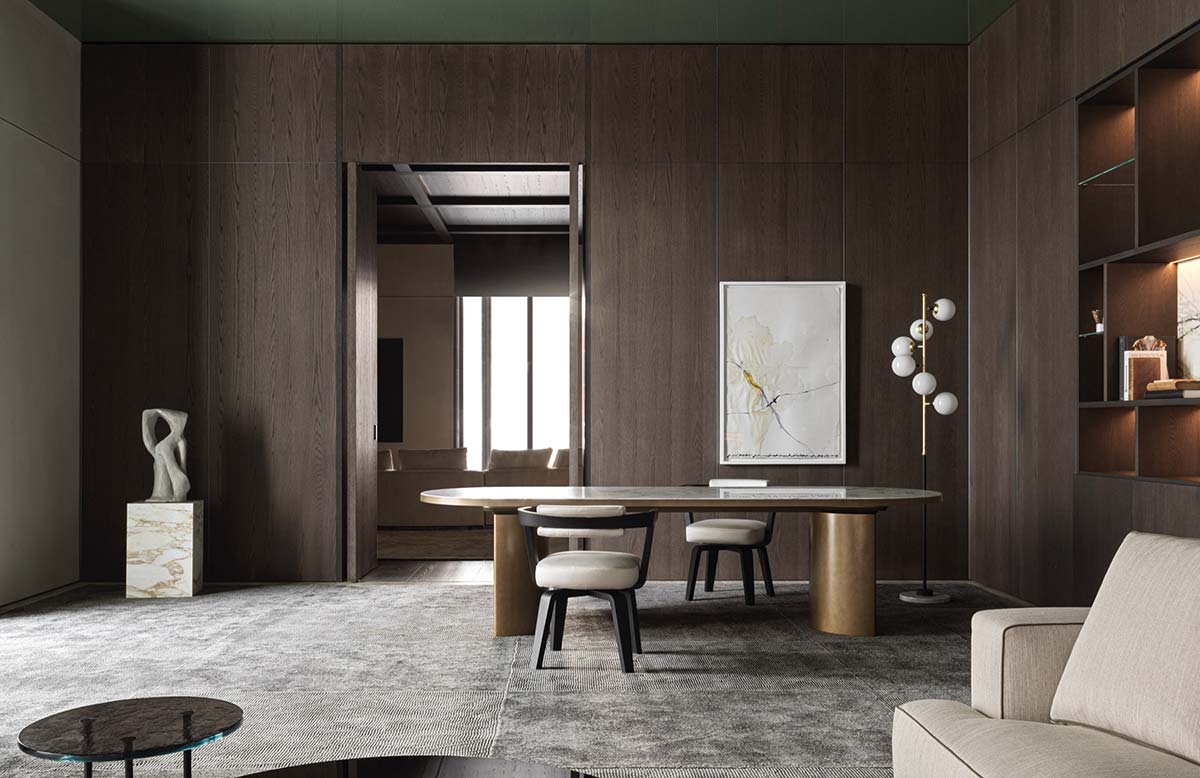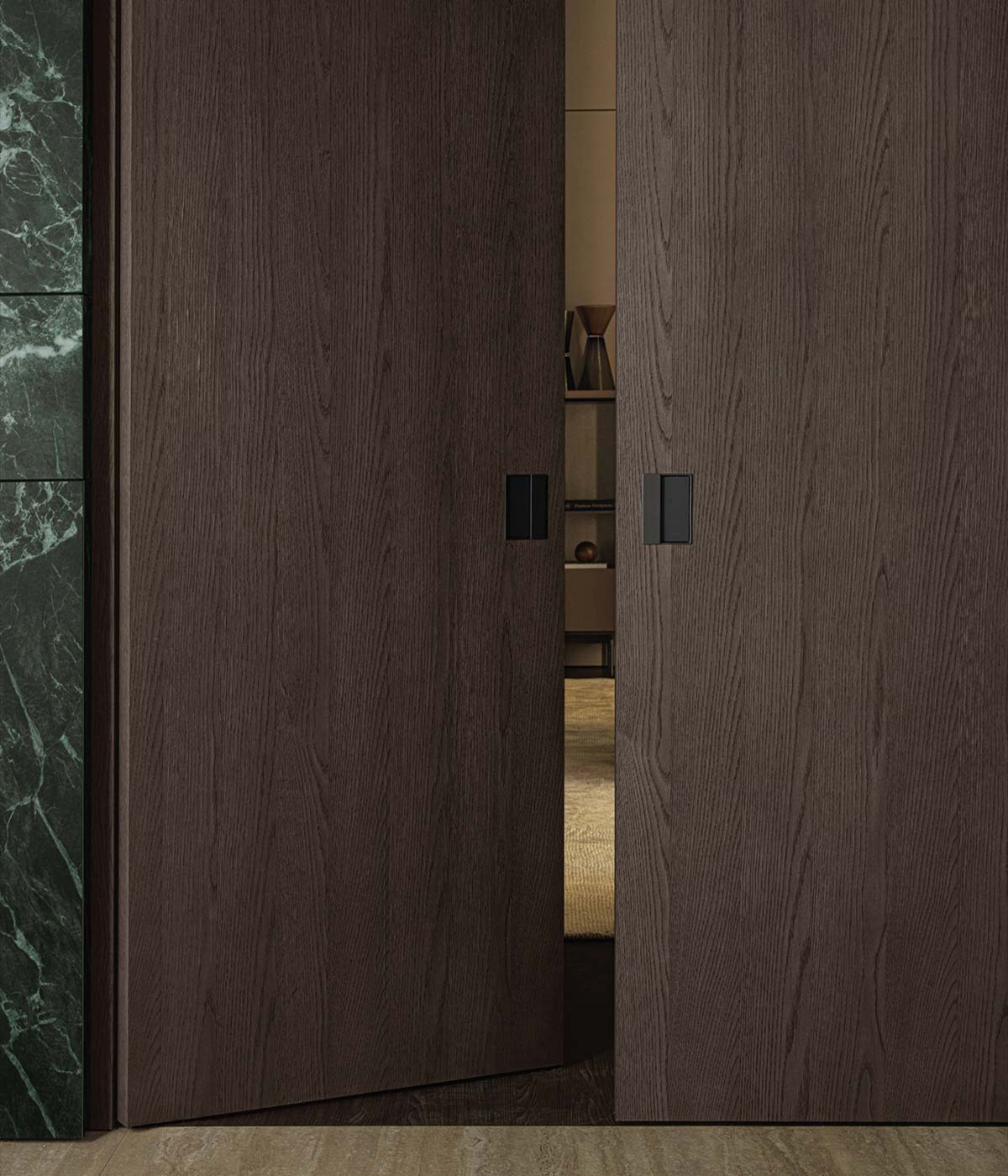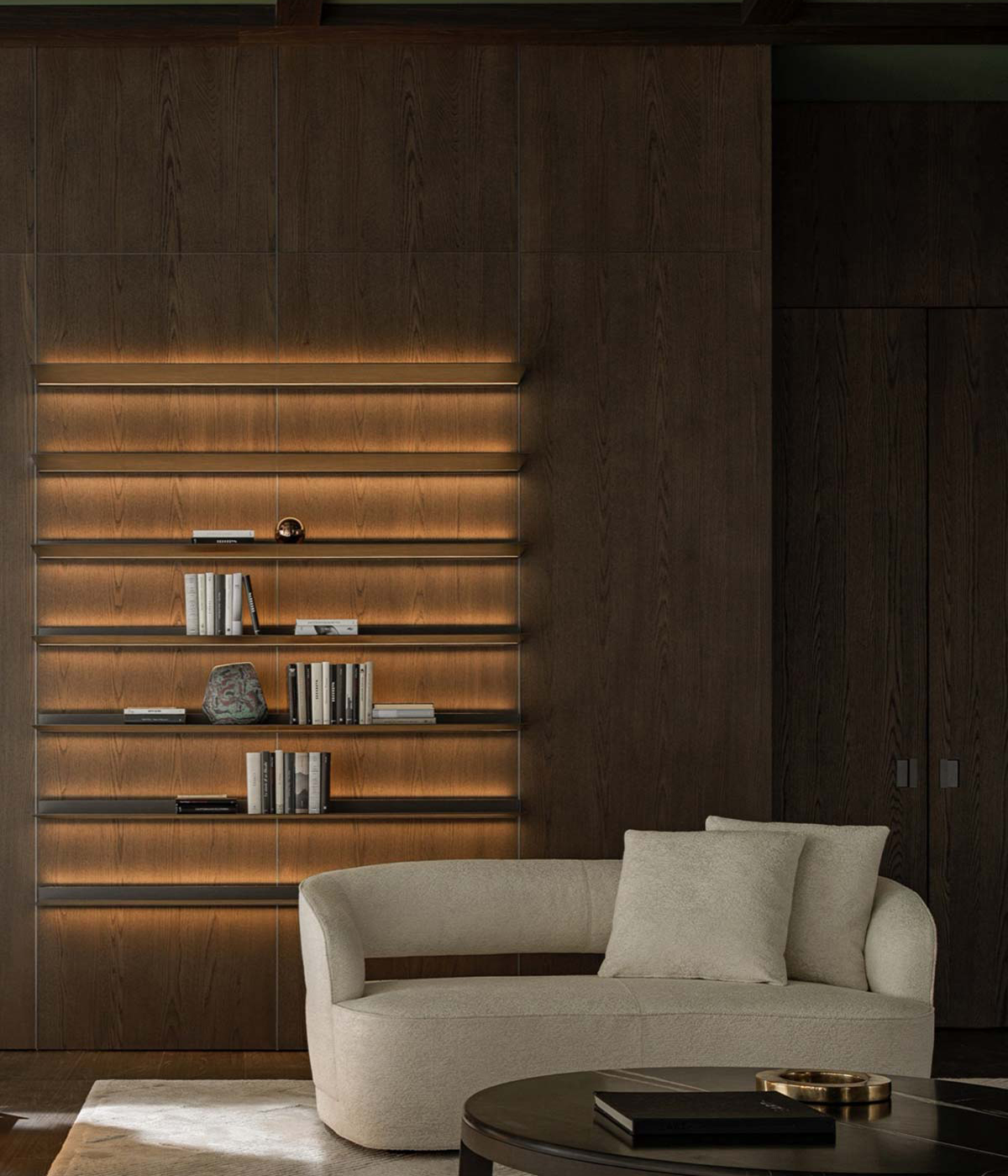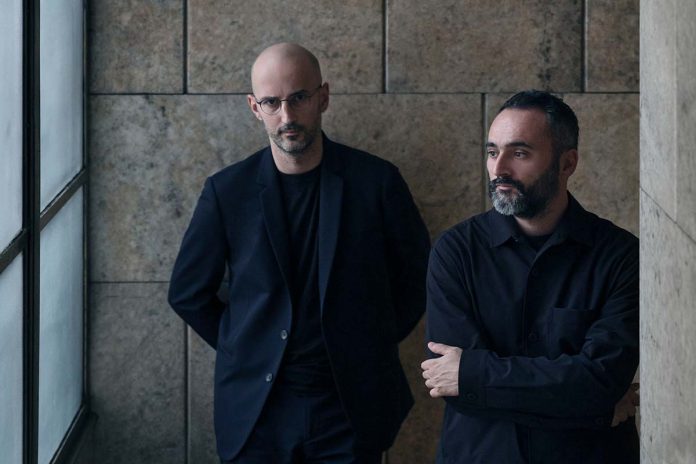Our ways of living in spaces (in the home or office) are constantly changing. This is for various reasons: technological evolution, for example, which is altering the very nature of working tools. How can we design a space capable of being reshaped over time?
We are projected into a world of great complexity. We have infinite possibilities, and each time we choose one solution over another we crystallize that moment in history, which takes on a meaning that remains the same even after a number of years. Designing a space for reshaping means making more room for choices that, in turn, can change over time. For this reason it is essential to take a viewpoint that looks to the future rather than the present state of affairs, permitting the possibility of shifting back, going forward and beyond, rethinking. We believe that the right approach is that of formulating a solution open to contaminations, able to accompany the essence of the space itself. Whether it’s an office, a residence or a showroom.

In your view, what are the principles to follow when designing a system of partitions?
Partitions, which have the same function as a traditional wall, can be seen as generators of architectures inside architecture. To better grasp this passage, for us it has been very useful to think about the concept of an alphabet, where each element is different from the others, and only their mutual relations can allow meaning to take form. In this sense, it is fundamental to consider two design levels: one connected to the details, another to the whole. Inside the detail, it is possible to work on the aesthetic quality of the partition, while when you intervene on the whole you produce an exact definition of the possibilities in terms of configuration and harmonious composition.
With the pandemic many companies and studios have imagined a future of remote working, hence smaller office facilities. Now the trend seems to be inverting. The same applies to open-plan areas, on which there are contrasting opinions. You have a privileged viewpoint on the market: in which direction (or directions) are things moving?
The impression is that today’s workspaces are increasingly fluid and heterogeneous, reconnecting us to the theme of your first question, since there is more and more talk about reshaping of spaces. Inside the same container, open-plan zones can coexist with more intimate situations, alongside managerial offices with a more traditional setup. Within this context the use of partitions is definitely aimed at creating a hybrid environment, outside of any predetermined logic. Another example in this sense is the spread of acoustic boxes that permit personalization of space depending on individual needs, notwithstanding the structural apparatus. The importance of not having a solution with impact on a functional level in a single direction, remaining open to multiple paths, has undoubtedly become a priority in the office sector.

This applies to workspaces. And the domestic environment?
Paradoxically, where the home is concerned, we have the sensation of seeing a return to a meaning close to the classic idea of dwelling. Companies seem to be increasingly interested in constructing a complete setting, rather than designing individual pieces. The system of paneling and doors we have designed for Molteni&C fits precisely into this dimension, responding to the necessity of obtaining a space marked by a high degree of personalization. Identifying ourselves through our surroundings, conveying a sensation of wellbeing, and having the possibility of choice in relation to our own everyday habits have now become the qualities desired by the inhabitants of domestic spaces. In the recent period we have had a chance to rediscover the importance of everyday life, an aspect that implies a vision of the home as a comfortable, customized place.


One of the projects that has brought you renown is the Touch Down Unit, a workstation of minimum bulk when not in use: the cancellation of space. Today, with this paneling system – of great variety – you are instead addressing the definition of the space itself. How are these two important moments in your work connected?
Since we are looking at two approaches that are complementary to each other, we can say that these two moments represent two sides of the same coin. Both viewpoints are extremely useful during the design phase: while one concentrates on the product, or on something truly independent and free of any type of structural constraint, the other has a reason to exist only in relation to the space to which it is tied. The connecting point between these two apparently unreconcilable worlds is the relationship generated with the space itself. This relationship shifts between an environment determined by the presence of the object, and another moment in which the meaning of the product is defined by starting from the space. As a result, for us it is fundamental to find a balance between these two poles, which work together to characterize our working approach.









